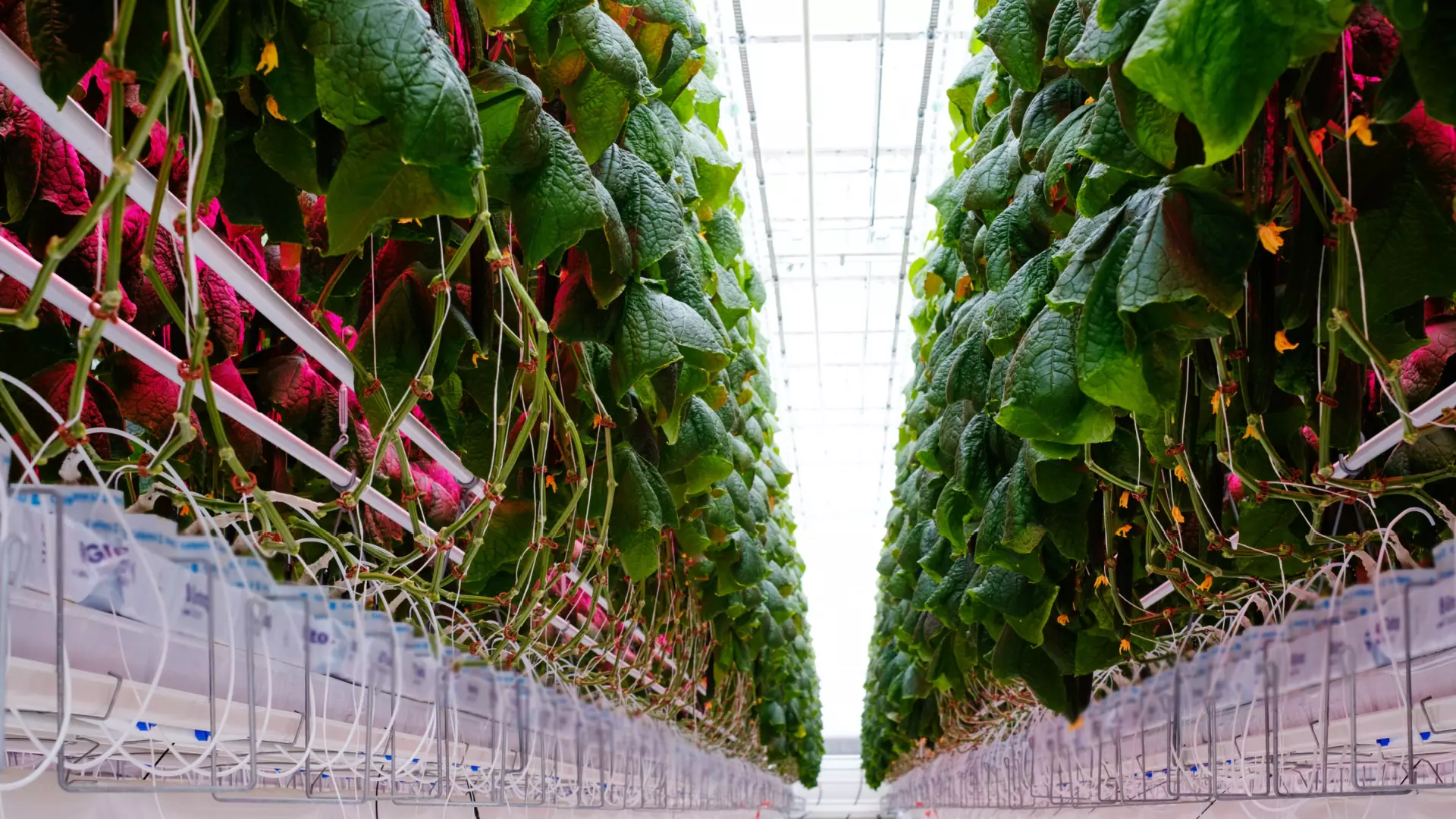PVD and processes
Indoor agriculture, between challenges and new technologies

The use of ultraviolet (UV) or infrared (IR) rays in indoor cultivation systems and greenhouses can help improve crop quality and meet the growing demand for food while preserving existing agricultural land.
However, indoor farming poses a challenge in terms of lighting systems to be adopted, as artificial light influences the growth rate and quality of crops. Today, advanced horticultural systems rely on light-emitting diodes (LEDs) to improve crop growth, increase plant productivity, and promote higher nutritional quality.
In addition, integrating ultraviolet (UV) or infrared (IR) rays into LED lighting systems can help optimize crop growth and quality. There is still much to be explored, though, on how these radiations can affect crop composition and quality during growth and storage.
To help the industry overcome these challenges, Almeco has partnered with the University of Milan and MEG Science to conduct a study aimed at discovering the opportunities of using UV and IR rays in indoor cultivation systems and greenhouses.
Indoor and vertical farming: a crucial challenge for our future
By 2050, almost 7 out of 10 people will live in urban areas. With the continued growth of the world population and the increasing desire of more people to live in cities, food security will become an ever-greater concern because:
- the demand for food will continue to rise;
- more land will be taken away from agriculture;
- climate change and soil depletion will make it increasingly difficult to meet the growing market demand.
For these reasons, there is growing interest in the possibility of growing vegetables in closed and protected systems. On the one hand, cultivation in greenhouses and indoor systems could help meet the demand and reduce the exploitation of the remaining agricultural land (allowing, for example, crop rotation or other practices to preserve soil fertility).
On the other hand, indoor farming poses a significant challenge related to the lighting system to be adopted for proper crop growth and to preserve quality during storage.
Use of UV or IR rays in indoor cultivation systems: a case study
To analyze the effects of UV and IR rays on crop growth, an indoor UV chamber was equipped with an aluminum reflector made with vega®UV, a PVD surface specifically developed to optimize reflectance in the UV band.
During the study, plants were grown in an experimental greenhouse, and treatments were applied at night, using a cabinet equipped with a UV-B lamp and an aluminum reflector made with vega®UV.
The research activities aimed to characterize the ecophysiological responses of some important vegetables to UV-B and IR light treatments. The integration of IR was tested to assess the possibility of controlling temperature along with light. During the study, researchers conducted several tests to monitor important crop parameters, such as flavonoids and chlorophyll, as well as chlorophyll fluorescence parameters. Laboratory evaluations included yield, weight loss during storage, nitrates, sugars, carotenoids, anthocyanins, and phenolic content.
The potential of UV and IR rays for the agriculture of the future
Both experiments yielded promising results. The IR test results showed that integrating IR into LED lighting in greenhouse and indoor cultivation systems could be a strategy to increase and manage temperature in a targeted way.
As for the UV-B treatments, several tests were conducted on different types of basil. The treated plants showed increased biomass production, higher photosystem efficiency, and a slight increase in secondary metabolites (phenolic compounds) at harvest. For these reasons, it was concluded that UV-B treatments can be successfully applied to improve the quality and yield of basil plants.
vega®UV, an innovative surface for special applications
The aluminum reflector used in this study was developed by Almeco, which made it with its product vega®UV. The vega®UV product portfolio includes surfaces that offer better performance compared to anodized materials or other typical reflective surfaces used in UV source applications.
Almeco has developed several versions of vega®UV, each with its own specific application:
- vega®UV-A, suitable for tanning lamps, forensic applications, and evaluating gems and works of art. Many insects are able to see UV rays, so insect traps use these wavelengths to attract them;
- vega®UV-B is used in the medical field, for example in light sources for the treatment of psoriasis and other skin conditions;
- vega®UV-C accelerates the sanitizing action of UV rays.
A partner for a more innovative and sustainable future
This experiment is just one example of Almeco’s commitment to innovation. Over the years, the company has developed an extensive network of partners – in addition to vast experience in aluminum treatments – to help promote innovation in the sector.
Thanks to its investments in technologies, research and development activities, and a team capable of meeting all customization needs, Almeco supports its customers by maximizing the qualities of aluminum to work towards a more sustainable future.

